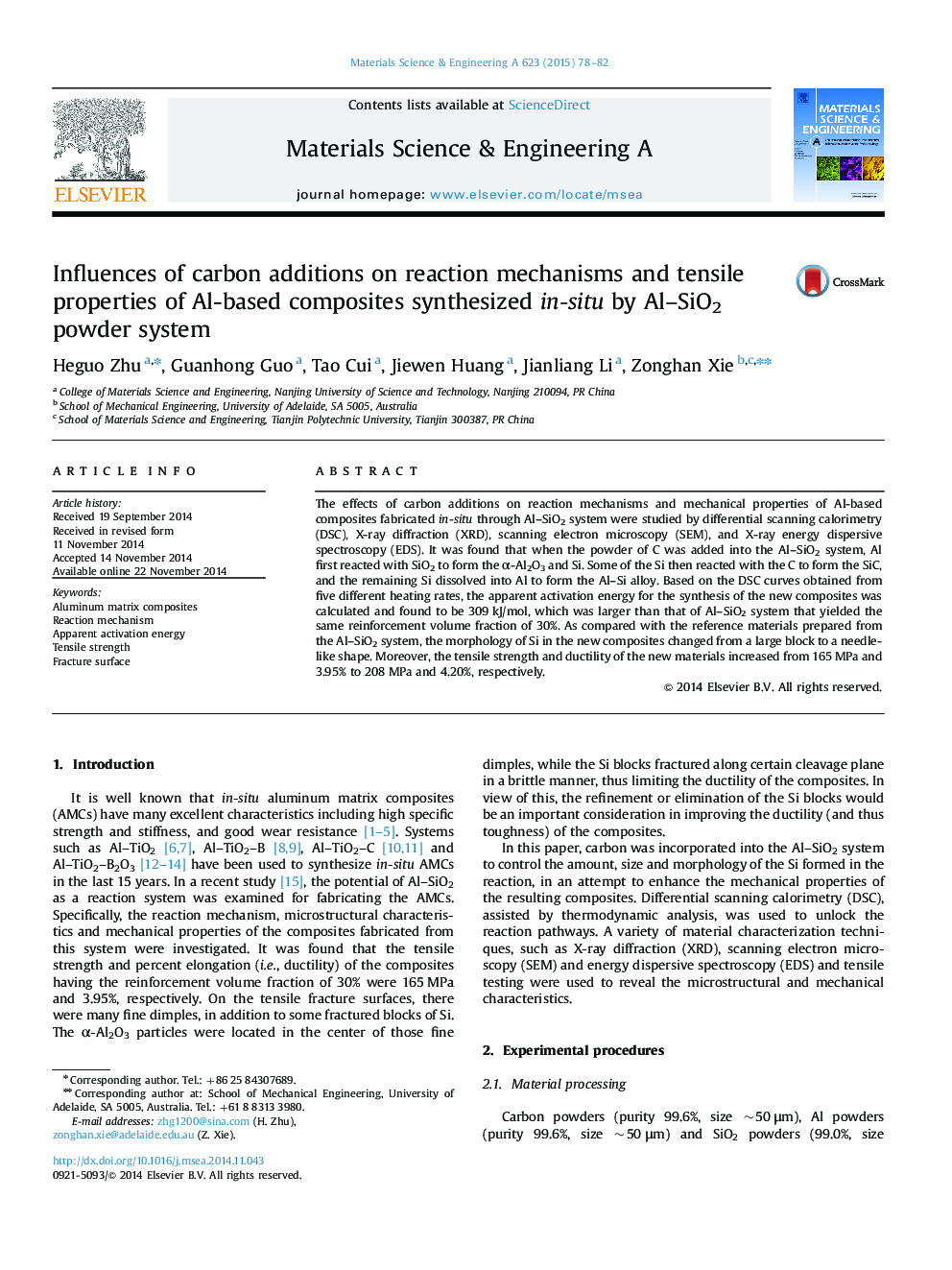| Article ID | Journal | Published Year | Pages | File Type |
|---|---|---|---|---|
| 1574638 | Materials Science and Engineering: A | 2015 | 5 Pages |
Abstract
The effects of carbon additions on reaction mechanisms and mechanical properties of Al-based composites fabricated in-situ through Al-SiO2 system were studied by differential scanning calorimetry (DSC), X-ray diffraction (XRD), scanning electron microscopy (SEM), and X-ray energy dispersive spectroscopy (EDS). It was found that when the powder of C was added into the Al-SiO2 system, Al first reacted with SiO2 to form the α-Al2O3 and Si. Some of the Si then reacted with the C to form the SiC, and the remaining Si dissolved into Al to form the Al-Si alloy. Based on the DSC curves obtained from five different heating rates, the apparent activation energy for the synthesis of the new composites was calculated and found to be 309 kJ/mol, which was larger than that of Al-SiO2 system that yielded the same reinforcement volume fraction of 30%. As compared with the reference materials prepared from the Al-SiO2 system, the morphology of Si in the new composites changed from a large block to a needle-like shape. Moreover, the tensile strength and ductility of the new materials increased from 165 MPa and 3.95% to 208 MPa and 4.20%, respectively.
Keywords
Related Topics
Physical Sciences and Engineering
Materials Science
Materials Science (General)
Authors
Heguo Zhu, Guanhong Guo, Tao Cui, Jiewen Huang, Jianliang Li, Zonghan Xie,
